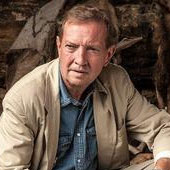How George Bush Teaches Women Power to a Macho World
How does Bush teach South Asia the virtues of woman power in conducting foreign policy?
October 11, 2001
There is considerable grumbling among the military men who run Pakistan — the country that has fast emerged as the key U.S. ally in the region — about having to deal with too many women as their direct U.S. counterparts.
This complaint may come as a surprise, considering that — not so long ago — Pakistan itself was run by a woman, Benazir Bhutto, making her one of the very first women ever to run a Muslim country. But, for a whole host of reasons, that part of Pakistani history does not matter much these days.
Here is how the Pakistani see the U.S. policymaking world. The U.S. Ambassador to Pakistan is Wendy Chamberlin. She arrived in Islamabad just 28 days before the September 11 terrorist attacks on New York and Washington. She has powerful credentials for her assignment, having served as Director of Counter-Terrorism in the first Bush White House ten years ago.
But that has little impact on the macho generals, tribal chieftains and religious leaders who are now the key players in Pakistan. Senior Pakistanis also complain about Christina Rocca, the Assistant Secretary of State for South Asia. Of course, her professional credentials as the former senior CIA official for the region are even more impressive than Chamberlin’s.
And if you then include the name of the U.S. National Security Adviser — Condoleezza Rice — to the list, even Westernized and English-speaking Pakistanis are telling their Washington contacts that they feel edgy about dealing with an America “whose policy for this region seems to be entirely run by women.”
Even in its wildest dreams, the Clinton Administration never came even close to line up so much woman power running U.S. affairs in a region that represents a true arc of crisis.
Read previous
An ID Card for All Americans?
October 10, 2001
